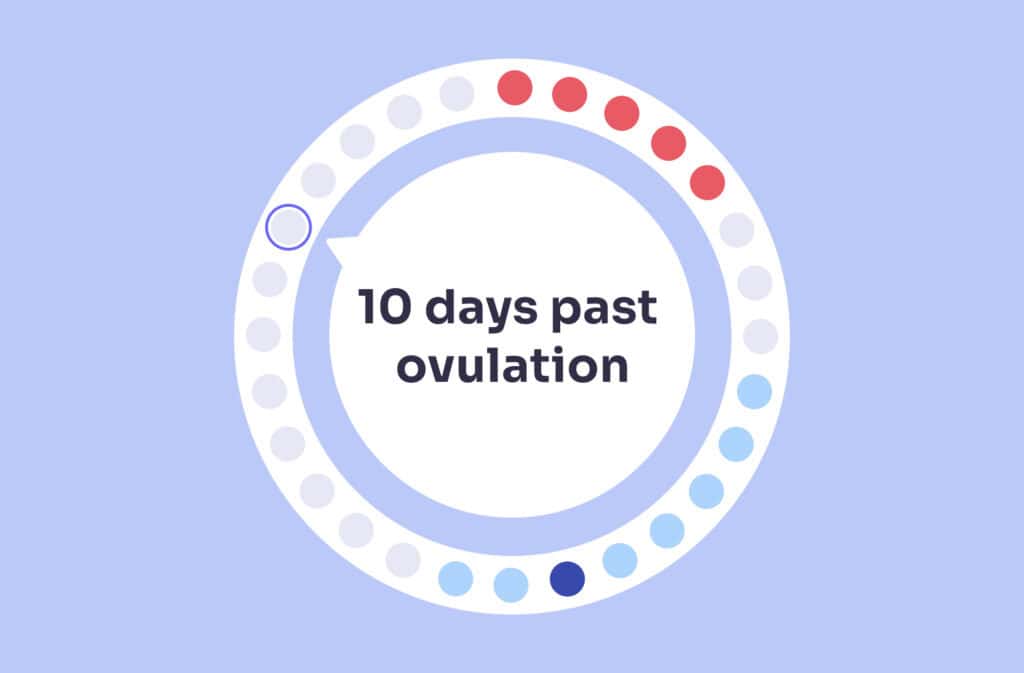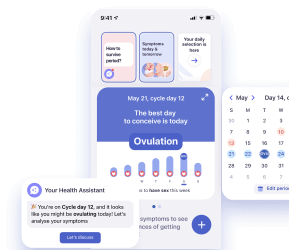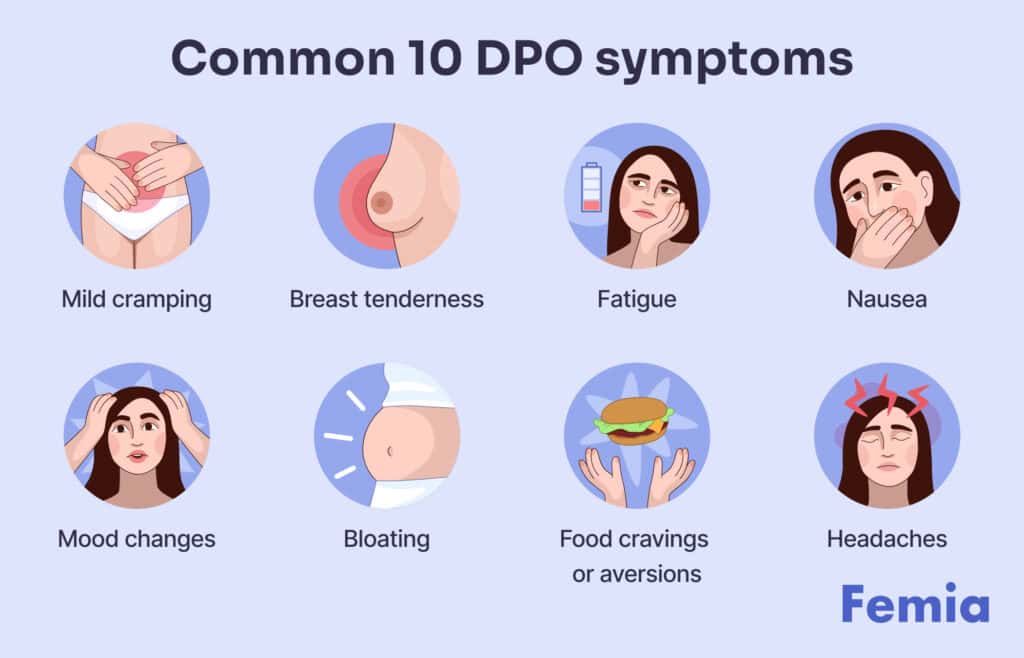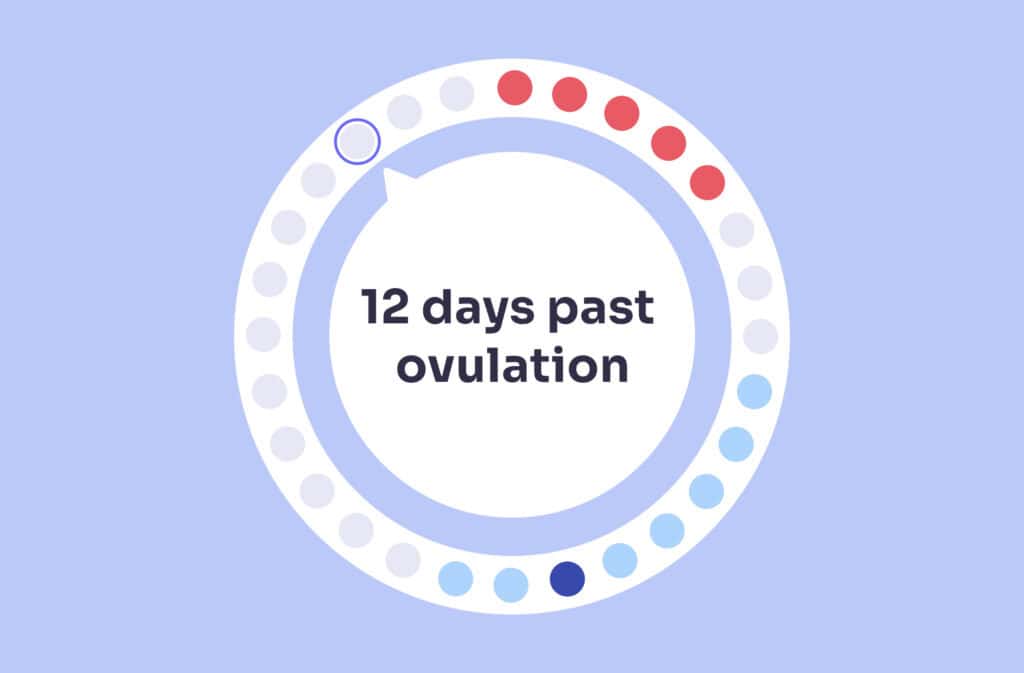Femia > Health Library > Getting Pregnant > Trying to conceive > 10 DPO: What to expect, and how to tell if you’re pregnant
10 DPO: What to expect, and how to tell if you’re pregnant

- Updated Feb 25, 2025
- Published
CRAFTED BY HUMAN
Crafted by human At Femia, we provide accurate and up-to-date information at every stage of your journey, from trying to conceive, pregnancy and postnatal support. All content is created by a real person based on in-depth research and own professional experience. Femia ensures that you will receive expert advice, strict accuracy and a personalized approach from our authors/medical experts. Learn more about our editorial policy.
FACT CHECKED
Fact checked At Femia Health, we maintain the highest standards of editorial excellence in delivering content focused on helping you conceive, guiding you through pregnancy, and supporting you postpartum. Explore our content review principles to learn how we ensure the accuracy and quality of our health and lifestyle tips for every stage of your journey.
At 10 DPO (10 days past ovulation):
- Implantation has likely occurred if conception took place.
- Hormone levels continue to change, with hCG starting to rise if pregnant.
- Early pregnancy symptoms may become more noticeable for some women. But 10 DPO symptoms can be similar to PMS, making it challenging to distinguish between the two.
- Some pregnancy tests may detect pregnancy, though it’s still early for many.
Welcome to the 10 DPO milestone! You’re now entering a crucial phase where early pregnancy signs might start to appear. Let’s dive into what’s happening in your body and what you might be experiencing at this exciting time.
➡️ Read other Femia guides in this series:
- 1 DPO: What to expect, and how to tell if you’re pregnant
- 2 DPO: What to expect, and how to tell if you’re pregnant
- 3 DPO: What to expect, and how to tell if you’re pregnant
- 4 DPO: What to expect, and how to tell if you’re pregnant
- 5 DPO: What to expect, and how to tell if you’re pregnant
- 6 DPO: What to expect, and how to tell if you’re pregnant
- 7 DPO: What to expect, and how to tell if you’re pregnant
- 8 DPO: What to expect, and how to tell if you’re pregnant
- 9 DPO: What to expect, and how to tell if you’re pregnant
- 11 DPO: What to expect, and how to tell if you’re pregnant
- 12 DPO: What to expect, and how to tell if you’re pregnant
- 13 DPO: What to expect, and how to tell if you’re pregnant
- 14 DPO: What to expect, and how to tell if you’re pregnant
- 15 DPO: What to expect, and how to tell if you’re pregnant
- 16 DPO: What to expect, and how to tell if you’re pregnant
What does 10 DPO mean?
10 DPO stands for “10 days past ovulation.” You’re well into the second half of your menstrual cycle, known as the luteal phase. At this point, your body is either preparing for pregnancy or getting ready for your next menstrual period.

What's happening in your body at 10 DPO?
At 10 DPO, several important processes may be taking place:
1. Implantation completion
If fertilization occurred, the embryo has likely completed implantation or is in the final stages of this process. This is when the embryo attaches itself to the uterine lining.
2. Hormonal changes
Your progesterone levels remain high, and if you’re pregnant, your body has started producing human chorionic gonadotropin (hCG), the hormone detected by pregnancy tests.
3. Uterine changes
Your uterine lining remains thick and well-vascularized, ready to support a potential pregnancy.
10 DPO symptoms: What might you be experiencing?

At 10 DPO, you might start noticing some early signs of pregnancy. However, it’s important to remember that many of these symptoms can also be related to PMS. Here are some common 10 DPO symptoms:
- Mild cramping: Some women experience 10 DPO cramping, which could be related to implantation or normal pre-menstrual changes.
- Breast tenderness: Your breasts might feel sore, swollen, or more sensitive than usual.
- Fatigue: You might feel more tired than normal as your body works hard to support a potential pregnancy.
- Nausea: Some women start feeling queasy around this time, though it’s not universal.
- Mood changes: Hormonal fluctuations can affect your emotions, leading to mood swings or increased sensitivity.
- Bloating: You might feel a bit puffy or bloated in your abdomen.
- Headaches: Hormonal shifts can sometimes trigger mild headaches.
- Food cravings or aversions: You might notice changes in your appetite or food preferences.
10 DPO symptoms if pregnant
While every woman’s experience is unique, some common 10 DPO symptoms if pregnant include:
- Implantation bleeding or spotting;
- Mild lower abdominal cramping;
- Increased breast tenderness or sensitivity;
- Fatigue or tiredness;
- Frequent urination;
- Heightened sense of smell;
- Slight nausea or queasiness;
- Mood swings or emotional sensitivity.
Remember, experiencing these symptoms doesn’t guarantee pregnancy, and not having them doesn’t mean you’re not pregnant.
👉Find out more: Fertility diet: What to eat to boost your chances of getting pregnant
10 DPO cervical mucus: What to expect
Cervical mucus can provide clues about your fertility and potential pregnancy. At 10 DPO, you might notice changes in your cervical mucus:
- If pregnant: You may observe an increase in creamy, white discharge. Some women report their cervical mucus becoming thicker or more abundant.
- If not pregnant: Your cervical mucus might start to decrease in quantity and become thicker or stickier as you approach your period.
However, cervical mucus observations aren’t a reliable way to confirm or rule out pregnancy at 10 DPO. Many women experience similar changes whether they’re pregnant or not.
10 DPO: Feel like period is coming?
Many women report feeling like their period is about to start at 10 DPO, even when they’re pregnant. This is because early pregnancy symptoms can be very similar to premenstrual symptoms. Some common sensations include:
- Mild cramping;
- Breast tenderness;
- Mood swings;
- Bloating;
- Lower back pain.
If you’re pregnant, these symptoms might persist past your expected period date. If you’re not, they’ll likely resolve once your period starts.
Can I take a 10 DPO pregnancy test?
The question on everyone’s mind: Is 10 DPO too early to test? While it’s possible to get a positive result at 10 DPO, it’s still considered early. Here’s why:
- Implantation timing: While implantation has likely occurred by 10 DPO, it might have happened very recently.
- hCG levels: It takes time for hCG levels to rise sufficiently to be detected by a test.
- Test sensitivity: Not all home pregnancy tests are sensitive enough to detect very early pregnancy.
If you decide to test at 10 DPO, use a first-morning urine sample and a sensitive early-detection test. Keep in mind that a negative result doesn’t necessarily mean you’re not pregnant – it could just be too early to detect.
👉Find out more: Evaporation line vs. faint positive: How to tell the difference on your pregnancy test
10 DPO symptoms ending in BFP (Big Fat Positive)
While every pregnancy is unique, some women who get their BFP report experiencing these symptoms at 10 DPO:
- Unusual fatigue;
- Mild cramping or twinges in the lower abdomen;
- Breast tenderness or changes;
- Increased sense of smell;
- Slight nausea or queasiness;
- Mood swings or emotional sensitivity;
- Food cravings or aversions;
- Frequent urination.
Remember, though, that many women have no symptoms at all at 10 DPO and still go on to have healthy pregnancies.

Questions from the Femia community
I'm having 10 DPO cramping. Does this mean I'm not pregnant?
Not necessarily! Cramping at 10 DPO can be a sign of early pregnancy for some women. It could be related to implantation or the uterus stretching. However, it can also be a normal premenstrual symptom. The only way to know for sure is to wait and take a pregnancy test.
My 10 DPO pregnancy test was negative, but I still feel pregnant. Should I test again?
Absolutely. At 10 DPO, it's still early for many pregnancy tests to detect hCG. If you feel strongly that you might be pregnant, wait a few days and test again. The most reliable results come from testing after your missed period.
Is it normal to have no symptoms at 10 DPO?
Yes, it's completely normal! Many women don't experience any noticeable symptoms at 10 DPO, even if they're pregnant. The absence of symptoms doesn't rule out pregnancy, just as having symptoms doesn't guarantee it.
The bottom line
At 10 DPO, your body is at a crucial juncture. If you’re pregnant, the embryo has likely implanted, and your body is starting to produce hCG. However, it’s still early days, and many women won’t yet have detectable levels of pregnancy hormones or noticeable symptoms.
If you’re trying to conceive, the wait can be challenging. Try to stay patient and take care of yourself during this time. Engage in activities that help you relax and stay positive. If you decide to take a pregnancy test, remember that even if it’s negative, it’s not definitive at this early stage.
For those who aren’t trying to conceive but are concerned about a potential pregnancy, remember that 10 DPO is still early. If you’ve had unprotected sex and are worried, consider taking a test in a few days or speaking with a healthcare provider.
Regardless of your situation, if you have any concerns about your symptoms or cycle, don’t hesitate to reach out to a healthcare professional. Take care of yourself, both physically and emotionally, as you navigate this phase of your cycle.
➡️ Read other Femia guides in this series:
- 1 DPO: What to expect, and how to tell if you’re pregnant
- 2 DPO: What to expect, and how to tell if you’re pregnant
- 3 DPO: What to expect, and how to tell if you’re pregnant
- 4 DPO: What to expect, and how to tell if you’re pregnant
- 5 DPO: What to expect, and how to tell if you’re pregnant
- 6 DPO: What to expect, and how to tell if you’re pregnant
- 7 DPO: What to expect, and how to tell if you’re pregnant
- 8 DPO: What to expect, and how to tell if you’re pregnant
- 9 DPO: What to expect, and how to tell if you’re pregnant
- 11 DPO: What to expect, and how to tell if you’re pregnant
- 12 DPO: What to expect, and how to tell if you’re pregnant
- 13 DPO: What to expect, and how to tell if you’re pregnant
- 14 DPO: What to expect, and how to tell if you’re pregnant
- 15 DPO: What to expect, and how to tell if you’re pregnant
- 16 DPO: What to expect, and how to tell if you’re pregnant
References
- American College of Obstetricians and Gynecologists (ACOG). “Early Pregnancy Loss: Miscarriage and Molar Pregnancy.” ACOG Practice Bulletin, no. 200, 2018, pp. 1-10. The American College of Obstetricians and Gynecologists. https://www.acog.org/clinical/clinical-guidance/practice-bulletin/articles/2018/11/early-pregnancy-loss.
- “Luteal Phase, an overview.” ScienceSirect. https://www.sciencedirect.com/topics/medicine-and-dentistry/luteal-phase.
- Wilcox, Allen J., et al. “Time of Implantation of the Conceptus and Loss of Pregnancy.” New England Journal of Medicine, vol. 340, no. 23, 1999, pp. 1796-1799. National Library of Medicine.
- American College of Obstetricians and Gynecologists. “Fertility Awareness-Based Methods of Family Planning.” ACOG Practice Bulletin No. 205, 2019. https://www.acog.org/womens-health/faqs/fertility-awareness-based-methods-of-family-planning.
- National Institutes of Health. “What are some common signs of pregnancy?” National Institute of Child Health and Human Development, 2017. https://www.nichd.nih.gov/health/topics/pregnancy/conditioninfo/signs.
- Mayo Clinic Staff. “Home pregnancy tests: Can you trust the results?” Mayo Clinic, 2022. https://www.mayoclinic.org/healthy-lifestyle/getting-pregnant/in-depth/home-pregnancy-tests/art-20047940.
U.S. Food and Drug Administration. “Pregnancy.” FDA, 2019. https://www.fda.gov/medical-devices/home-use-tests/pregnancy.

What does a hymen look like and how do you know if your hymen is still there? This article discusses hymen anatomy and the common hymen breakage signs.

Learn about common symptoms at 6 days past ovulation (6 DPO), potential early pregnancy signs, and the importance of timing for pregnancy tests. Expert advice from Femia.

Learn about the symptoms at 12 days past ovulation (12 DPO), including signs of early pregnancy, and discover the best time to confirm with a pregnancy test. Expert advice from Femia.

